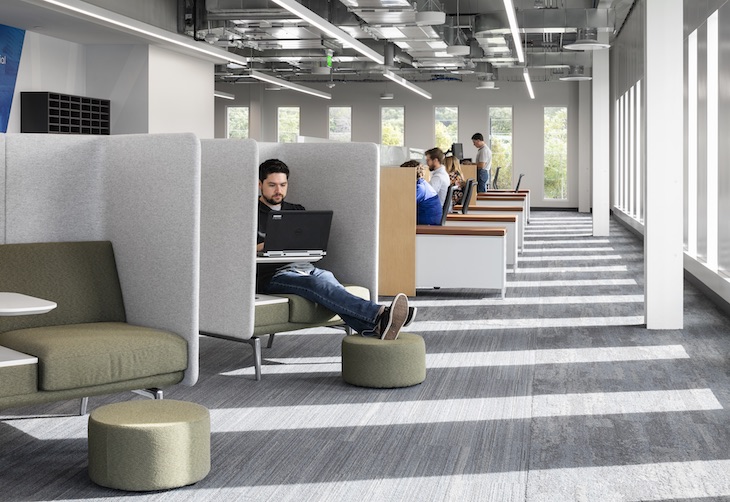We’re counting down to 2020 by sharing 12 days of emerging workplace trends! Learn what trends our top global contributors are most excited to see evolve in the new year.
Bonus Trend: 2020 will bring spaces that utilize technology to truly save time and improve the work environment.

I recently learned the term “frictionless environment”; an environment that integrates technology in order to make tasks easier. But how often do you hear someone complain about how it takes 15 minutes just to get connected to a conference call? Technology is a resource. With further developments in AI, designers can spend less time on data-driven tasks, and more time being creative and producing higher quality, design oriented spaces. However, advancements in technology do not always save time if they are not user friendly; if they aren’t intuitive.
I believe, that the design community has come to realize the importance of truly integrated technology. I look forward to seeing disciplines working together to execute hi-tech design. This does not mean looping in the AV-Consultant during the middle of the design process. This is a collaboration with the designers, furniture vendors, clients, and technology experts to seamless integrity technology and create a frictionless environment.
I am looking forward to seeing furniture that is flexible and can be reconfigured, while addressing all of the power and connectivity requirements.
Soon every employee and conference room with have chairs that automatically adjust to the individual sitting in the chair at the time.
Employees will have the opportunity to create personalized preferences about their environment, and use a scan code when they enter a room to adjust settings such as temperature, lighting, and displays.
Our role as designers is to design spaces that are functional and aesthetically pleasing. Today, a functional space requires seamless technology integration. With the pace of technological advancement, there is no way designers can know all of the endless possibilites. Designers need to know the right questions to ask, and the people to involve, in order to provide frictionless environments to clients. In 2020, I believe we will see spaces that utilize technology to truly save time and improve the work environment.


nice work, keep up the good work
very nice article